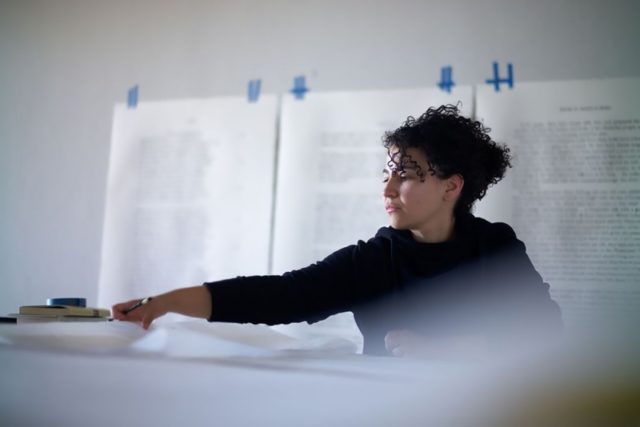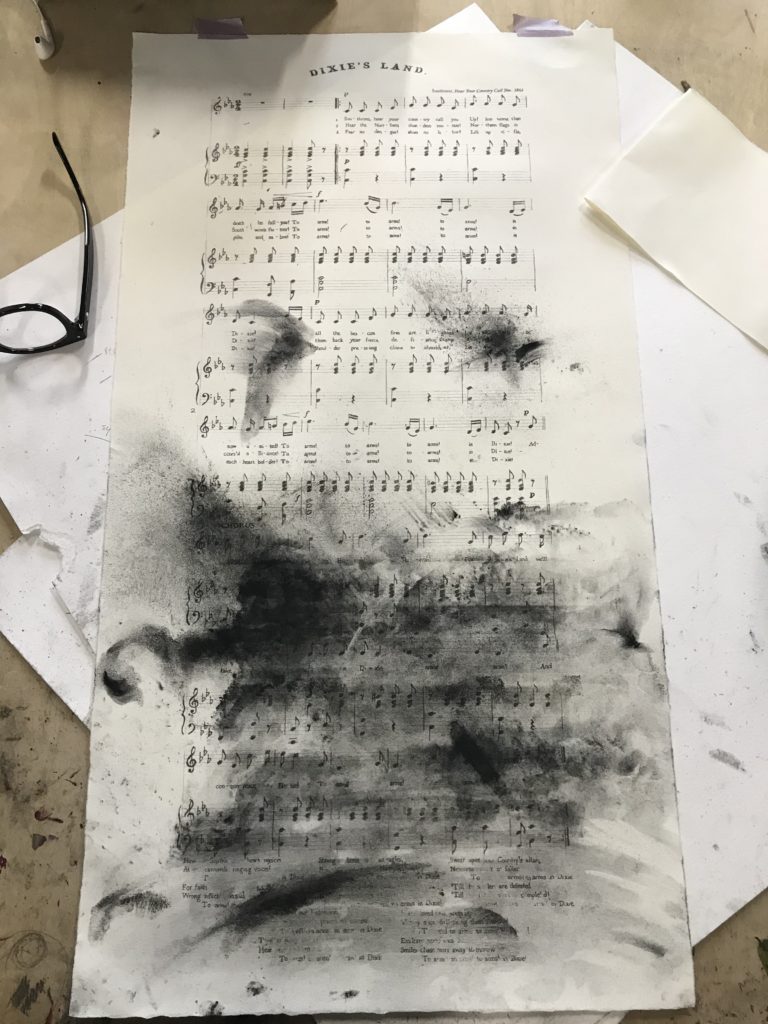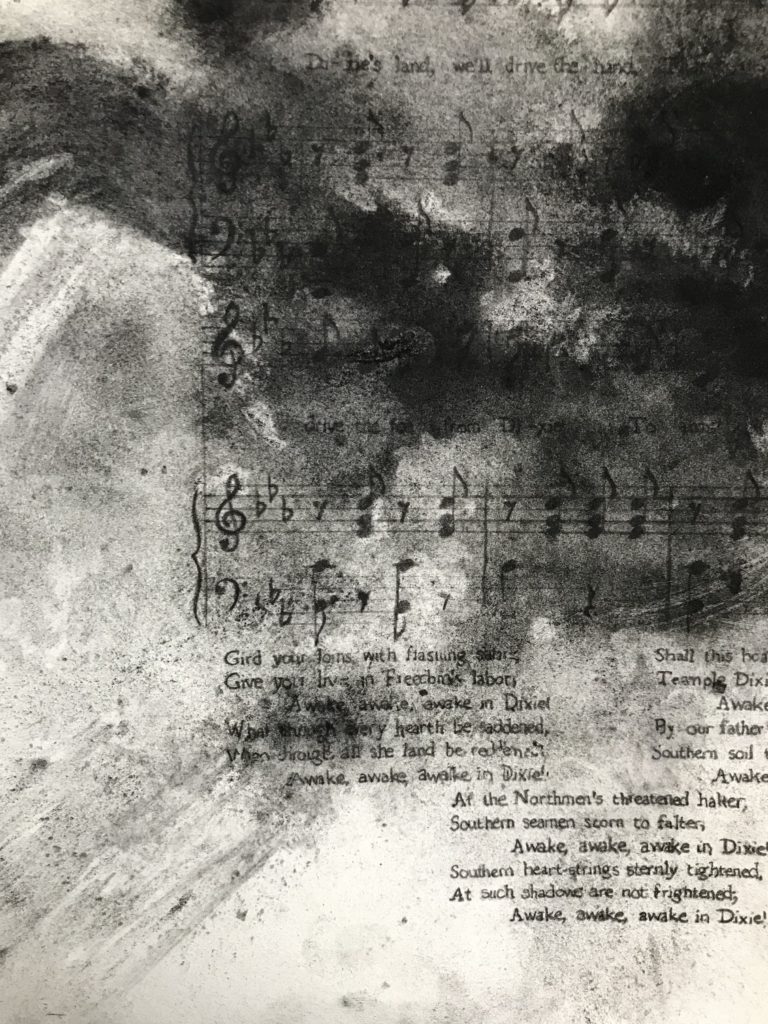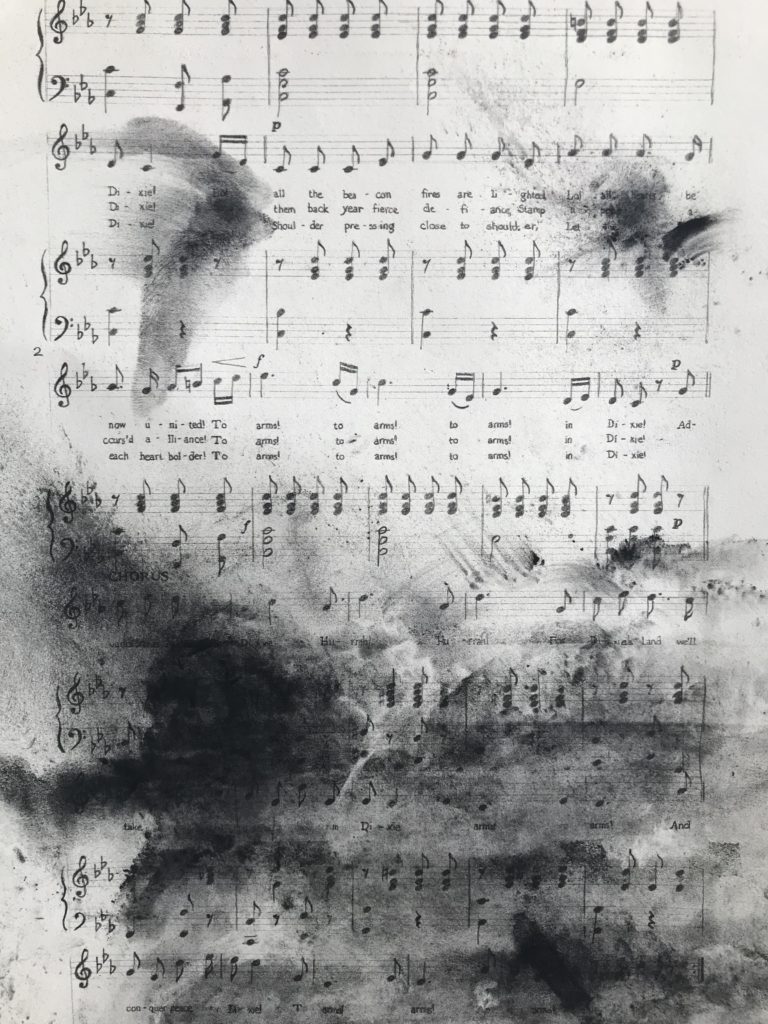Through support of the Justice, Equality and Community Grant, Bethany Collins is the 2019-2020 Public Humanities Practitioner-in-Residence at Davidson College. While many institutions continue to struggle with their past in regard to slavery and racism, particularly in the form of monuments and portraits, Davidson College is choosing to engage with the past. The recent creation of a Commission on Race and Slavery is an example of this engagement. Analogous to the commission, the Galleries commissioned Bethany Collins to create a new work of art specifically for Davidson College.
Bethany gives us a studio tour and an update on the artwork in today’s blog post:
A lesser-known musical term, contrafactum refers to a song in which the melody remains constant while the lyrics shift. This was a more popular practice in early American songbooks. For instance, the lyrics of My Country Tis of Thee and The Star Spangled Banner were re-written at least 100 times from the 18th-20th centuries for different political causes— from suffrage and temperance, to abolition and even the Confederacy—each articulating a version of what it means to be American.
Originally written by Dan Emmet in 1859 for a minstrel show in Ohio, Dixie (or Dixie’s Land) is another such contrafactum. In 1861 shortly before Virginia seceded from the Union, the Richmond Dispatch deemed Dixie the “National Anthem of Secession” and defacto anthem of the Confederacy. In fact, most of the song’s re-written lyrics alternate between support of the Union and the Confederacy. By the end of the Civil War, Emmett’s song had forever linked Dixie to the region and racial terror.
As with many Southern colleges, Davidson College has its own particular relationship with Dixie. The song was performed at Davidson athletic events into the 1960s. Dixie was part of the original score for Birth of a Nation, the film version of which screened in Davidson’s old student union (now the Sloan Music Center) in April of 1961 as a social gathering before final exams. The War-Time Dixie was written by a Davidson College affiliate faculty member, Dr. Paul Barringer, and copyrighted in 1917 for the benefit of the United Daughters of the Confederacy.
Since its beginning, Dixie continues to conjure America’s enduring history of racial injustice, violence and terror. A multi-part work on paper, Dixie’s Land (1859-2001) consists of 10 selected contrafactum–each from a key moment in American history–transposed into a mournful minor key. Atop these lyrical renditions are charcoal drawings of tear gas deployed by police during the recent protests following the killing of George Floyd in Minneapolis, MN. The final song included in the work will be René Marie’s 2001 version, which morphs into Abel Meeropol’s mournful anti-lynching poem, Strange Fruit. Each drawing is a haunting vision of the past in our present.
Dixie’s Land (1859-2001), 2020
Charcoal, toner and graphite on paper
14″ x 26″ each
Hear Bethany’s artist talk from November 2019 where she initially laid out some considerations for the project:
Bethany Collins (American, b.1984) is a multidisciplinary artist whose conceptually driven work is fueled by a critical exploration of how race and language interact. In her Contronym series, for instance, Collins transposes definitions from Webster’s New World Dictionary of American Language onto American Masters paper, then aggressively obscures much of the entries with an eraser. What remain are specific snippets of meaning that are poetically charged through their isolation, as well as the crumbled paper bits left behind by her erasing. Her works have been exhibited in solo and group exhibitions nationwide, including the Studio Museum in Harlem, the Drawing Center, the High Museum of Art, Van Every/Smith Galleries at Davidson College, and the Birmingham Museum of Art. Collins has been recognized as an Artist-in-Residence at the Studio Museum in Harlem, the MacDowell Colony, the Bemis Center and the Hyde Park Art Center, among others. In 2015, she was awarded the Hudgens Prize. She is currently represented by Patron Gallery, Chicago.




